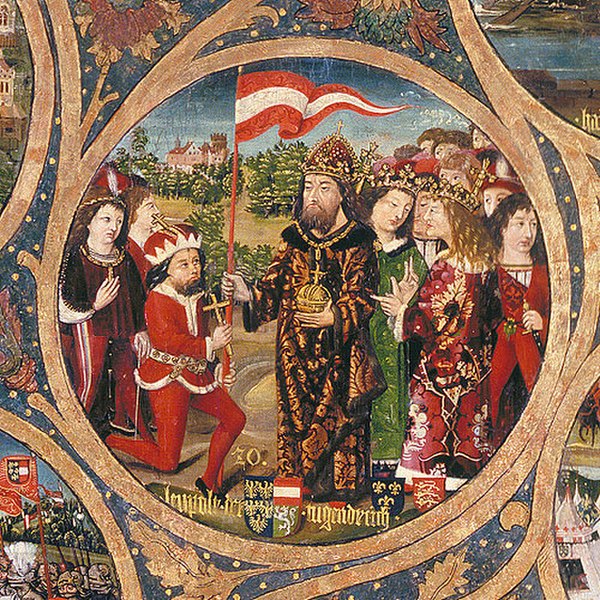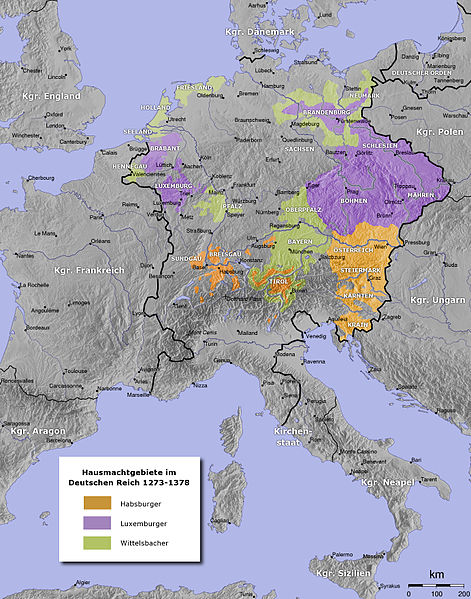The Duchy of Austria was a medieval principality of the Holy Roman Empire, established in 1156 by the Privilegium Minus, when the Margraviate of Austria (Ostarrîchi) was detached from Bavaria and elevated to a duchy in its own right. After the ruling dukes of the House of Babenberg became extinct in male line, there was as much as three decades of rivalry on inheritance and rulership, until the German king Rudolf I took over the dominion as the first monarch of the Habsburg dynasty in 1276. Thereafter, Austria became the patrimony and ancestral homeland of the dynasty and the nucleus of the Habsburg monarchy. In 1453, the archducal title of the Austrian rulers, invented by Duke Rudolf IV in the forged Privilegium Maius of 1359, was officially acknowledged by the Habsburg emperor Frederick III.
Leopold V is awarded the red-white-red banner by Emperor Henry VI, detail from the Babenberg Pedigree, Klosterneuburg
Habsburg (orange), Luxembourg (violet) and Wittelsbach (green) dominions within the Holy Roman Empire, 14th century
The Margraviate of Austria was a medieval frontier march, centered along the river Danube, between the river Enns and the Vienna Woods, within the territory of modern Austrian provinces of Upper Austria and Lower Austria. It existed from c. 970 to 1156.
The first mention of the word Ostarrîchi (996), the word is marked with a red circle.



